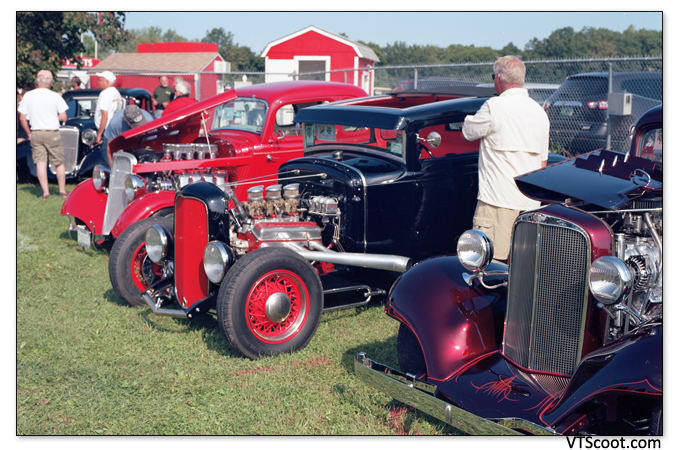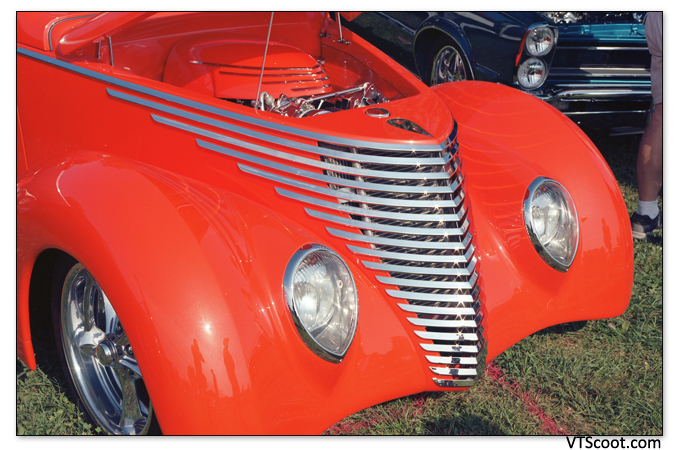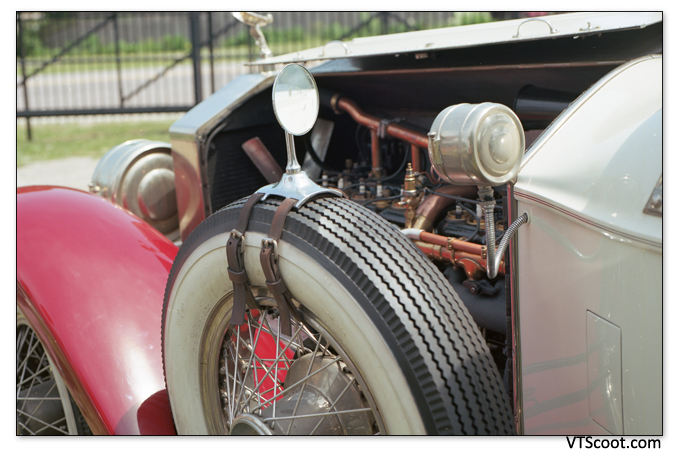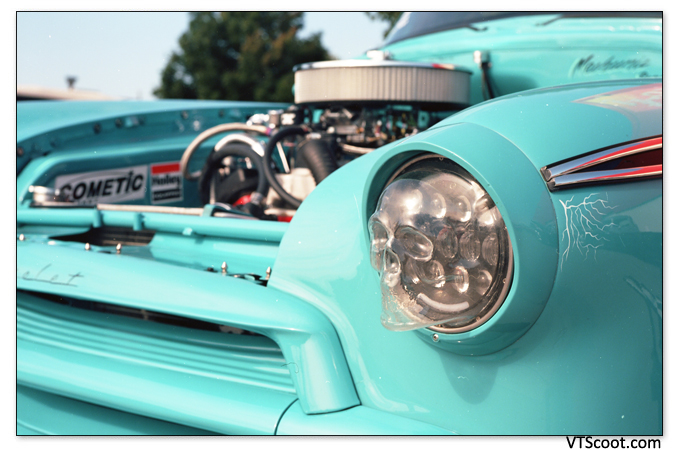Mamiya M645
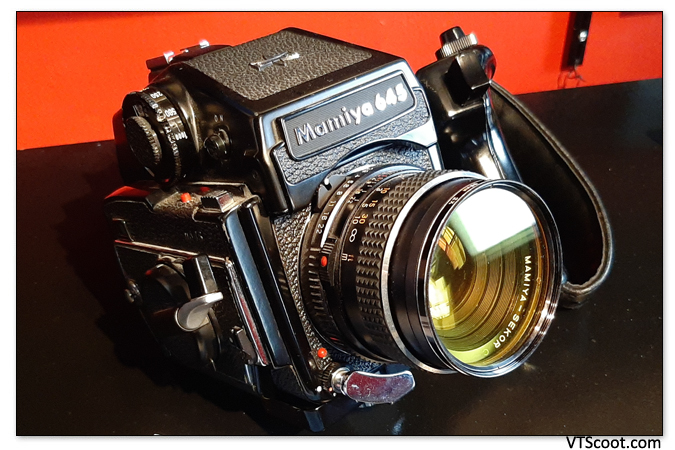
I had been shooting film in 35mm format for years, and had recently been exposed to (get it? Exposed? I slay me!) medium format by way of the Holga, then a twin-lens reflex. I enjoyed what medium format brought to my game, and I had just invested in a film scanner that can scan 120 film, so I felt ready to invest in a more serious medium-format camera. I had decided upon a Bronica SQ-A.
…then I hit the local camera shops and eBay for a Bronica SQ-A, and my resolve was weakening. 600 bucks for one of these vintage cameras? I’m sure it’s worth it, but hell, I don’t know if I want to spend that kinda money just yet. FYI, I’ve been shooting medium format for 6 or 7 years now and I’m still not sure I want to invest 600 bucks into a Bronica. And Hasselblad? No way, Outside my price range that I would feel comfortable paying. Then I happened upon the Mamiya 645. First off, I could get one for well under $300 with a lens included. It’s still a high-quality, serious camera. Not to mention, there are an awful lot of accessories and upgrades available on eBay. Way more than what’s available for the Bronica line. It seemed a good camera to grow into.
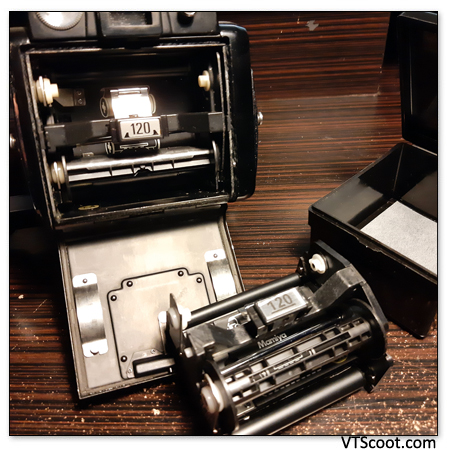
The camera shipped from Japan, and it was a little pricey to ship so I hoped it wouldn’t need to be sent back because of a messy issue the company craftily failed to mention in the listing. Buying cameras online can be dicey, I never know how good an item will be until I get it and run a roll of film through it, hoping for the best. So far I’ve only been burned a couple of times, and both times I was able to get a refund. FYI, if a camera on eBay is listed at $200 and described as “It looks like it probably works, but I’m not an expert and I haven’t tested it and No Refunds!!” it’s probably broken and the seller is a sleaze. Also FYI, unless it’s listed as a “For Parts Only” camera the seller can’t refuse you a refund for broken merchandise.
One camera I requested a refund on the seller said “Oh sorry, didn’t realize it was scrap metal. here’s your refund and no need to send the camera back, just keep that broken piece of noise” but the OTHER camera seller tried to fight me on the refund. “But I said in the listing that all sales were final.” I replied “All sales on a working camera? Sure. You listed this as working, and it is not.” “Online auctions are a gamble, you should have read the listing” he tells me. “I DID read the listing, and it listed the camera as used but functional. Why would anyone give you $150 for a broken camera?” Complaint filed, eBay Inc tells the man “Don’t be an asshole, pay him a refund.” I’m instructed to send the camera back and “It better not have a scratch on it.” Sure thing, I’ll send you back this broken camera sans-scratches. Happy hustling!
This wasn’t one of those situations. I received my camera, everything was as expected, and I was happy.
A little primer on all these numbers and letters associated with medium format cameras. 35mm uses canister-loaded film with set frame sizes that measures 35mm when you combine the horizontal width of the frame with the vertical. Medium format film is on a wider roll of film, wound onto a plastic spool with a light-proof paper backing. The vertical size of the negative will be 6 centimeters, but there is no set width horizontally. The “SQ” in Bronica SQ indicates that the resulting images shot with this camera will be square images, 6cm by 6cm. A Pentax 67 shoots a frame 6cm x 7cm wide, and measurements can go up even further. The Mamiya M645 shoots a smaller frame, at 6cm by 4.5cm. So the frame is slightly smaller, rectangular like we’re used to seeing in photography, and you can get more frames shot on a roll of 120 film. I can get 15 shots on a roll of film with my Mamiya, where I can only get 11 or 12 with my Yashica Mat, which creates a square, 6×6 frame. Larger film size means higher resolution, higher resolution means clearer, more detailed photos. It’s like more pixels being added to a digital camera pictures. So you can imagine the appeal of working in medium format.
Then there’s large format, where images are captured on individual sheets of photographic film the size of your iPad, but, we’re not going to talk about that today.
The M645 is a modular system film camera, by this I mean the camera itself is basically a box with a reflex mirror in it and all the gears that make it move, all the other parts are added to the camera. You can change the lens, you can change the viewfinder, the focusing screen, you can change the film transport, the winder, basically everything on this camera can be modified to meet your particular needs. My camera has a prism viewfinder with a light meter built into it that may or may not be precise, it has an 80mm portrait lens, and I swapped out the auto-winder that came with it for a manual film crank. Probably seems counter-productive to downgrade a camera that already came upgraded, but the auto-winder is filled with AA batteries and is attached to a big right-side handle. Practical and works great, but it adds weight to the camera and makes it a lot more awkward, size-wise. I can’t really fit it into bags terribly easily, and the camera is already kinda heavy to begin with. The Mamiya has a weight comparable to that of my Nikon F4, however, it’s nearly twice the size, and has no carrying strap. So transportation takes a bit of dedication, and you get 15 shots on a roll of 120 before you have to swap out film carriers, of which I bought a spare, so I can shoot two rolls before I need to find a place to sit down and wind two more rolls onto the film cartridges. Perhaps it’s not good for a hike up Mount Hor but if I’m shooting a model on location, or shooting something on a tripod in a studio, or shooting an event where I’m able to carry more gear and have a place to set it down, this is a great camera.
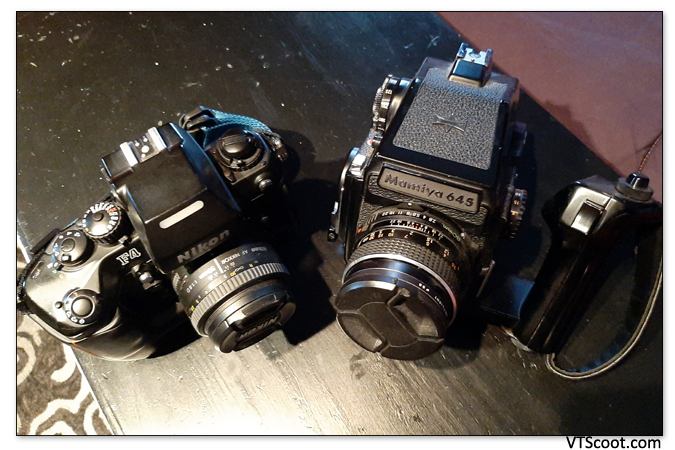
The camera is attractive, with its pebbled leather covering over shining metal frame it feels tactile in the hands as well. It’s weird getting used to something that is otherwise not designed very ergonomically, occasionally I’ll hand a left-side handle (less bulky that the auto-winder but, yeah, I really did go through the trouble of changing out the winder just so I can put a handle back onto the other side), but without it I’m holding a big box up to my face. The M645 is a manual-focus mechanical camera manufactured between 1975 and 1987, and it has the look and feel of older cameras from this era. You have your choice of two shutter release buttons, one on top and one on the lower front. Press either button and a “clack” will alert everyone within 140 yards that a picture has been taken. There is, of course, a mirror lock up button on it somewhere. I’ve never used it, but that would certainly reduce some camera shake. I’m also not sure where a depth of field preview button would be, I’ve never used that either. Mirror lock-up and depth of field preview are never really on my list of frequently (read; ever) used buttons. Wide aperture is shallow depth, narrow aperture is deep, f8 is a happy medium that II try to hang out n the neighborhood of 70% of the time.
The film transport on these cameras is usually an entire back piece that can be fitted and removed mid-roll if desired, with the M645 loads 120 film onto a small metal cassette that you push into the back of the camera. Not a removable module, not swappable mid-roll, however, you can pick up spares on eBay for as low as 30 bucks with a carrying case. Bronica film backs are frequently over a hundred bucks. So I picked up two that I can pre-load with film for quick changes once a roll is finished.
Another thing you should know about medium format cameras like this one, they often come outfitted for 220 film. Plenty of 220 backs and/or cassettes available for these sort of medium format cameras. However, 220 film hasn’t been manufactured in quite some time, and you can’t just put a roll of 120 into a film carrier designed for 220. I really don’t know who these sellers are targeting when selling 220 film backs and cassettes, but be warned, if you look for a medium format camera online or at a shop, and it’s outfitted for 220 film, you’re going to be needing to buy more stuff in order to make this camera work. If the price is right that’s fine, but you’ll be needing to spend 30-200 bucks more to make it work, depending on whether you’re shooting Mamiya, Bronica, or Hasselblad.
Not all models have a light meter, but that’s not a deal breaker. Once you get used to using the Sunny 16 rule, or an off board meter, you get used to the action and are able to make due. I found a prism viewfinder that had a light meter, I’m not sure how accurate it is but the price was right so I bought it, attached it, and sometimes I even use it. Perfectly-metered exposures are a breeze with modern film cameras from the 90’s, but with cameras from the 60’s and 70’s you have to do the work yourself much of the time, adjust for the unique lighting situations, and will have plenty of fails. That part is fine, as it adds to the learning process. If I needed perfectly fool-proof image capturing I’d be grabbing my Nikon F4. It’s all about the experience, “Zen’ing” with my camera. Much like a rider wants to “Zen” with their motorbike, feeling the bike as an extension of themselves on which they harmonize with the world around them, feeling a keener sense of awareness of the world they pass through.
It’s a little big and unruly as a take-everywhere camera, that’s more a job for rangefinders and smaller SLRs. However, when I’m setting up a shoot or photographing an event, my M645 has given me some very fine results. Whenever I go to classic car or motorcycle shows, balloon festivals or other colorful outdoor events, this camera plus a few rolls of Kodak Ektar have very rarely disappointed me.

